Written by Guest Contributor on The Prepper Journal.
Editors Note: A guest submission from Valknut79 to The Prepper Journal. The next Prepper Writing Contest Award is coming! As always, if you have information for Preppers that you would like to share and possibly receive a $25 cash award as well as being entered into the Prepper Writing Contest AND have a chance to win one of three Amazon Gift Cards with the top prize being a $300 card to purchase your own prepping supplies, then enter today!
Home security has become a major issue in my life. Last year, I detailed my experience of having a near break-in for this website , and since then, I’ve done quite a bit more learning about how to set up our suburban stronghold for emergency situations.
I’ve hired a consultant to meet with me, talked with friends in the military and made friends with a police officer to pick his brain, and this is what I’ve come to learn about the world of creating a safe stronghold for now, and for after the SHTF.
First, your home must be safe, but it also needs to be livable, and affordable. Livable in the sense that, yes, it would be safer to build a home with no windows, but it would also be impossible to sell when the time comes to move, and few people would be able to live happily in that kind of environment. It’s obviously better to build your home out of steel, with bullet resistant glass windows, cameras throughout, and traps set for any unknown bad guys, but that’s financially impossible for the vast majority of individuals.

That said, I repeat, your home must be safe. The easiest way to make it safe while still making it livable is to create designated zones throughout your home and your property that have different levels of inherent safety. We’ll start from the highest security level and work down to the lowest, documenting some, if not all of the considerations that you’ll want to have.
Level 1: The Panic Room
Let’s say that a gang of well-armed thugs breaks in to your home, with the intention of not just stealing all of your stuff, but with the intention of harming you and your family. Where do you go? This area of your house is the “panic room” or the “dying room” – the place where you feel most prepared to defend the safety of your family, where the only way that your attacker is getting to you or them is over your dead body.


A panic room should be located centrally within your home, on the ground level, preferably in a location that has only one point of entrance – through the door you entered through – with no windows. Since this is a room that you’ll likely only use in dire emergency, you need to have a weapons cabinet, and some kind of furniture that you can use for cover. Minimal supplies are needed: some water and some first aid, maybe a snack. If you’re stuck in the panic room for long enough to require more than that, you’re probably not going to make it out at all.
Having some form of quick communication is important in this room. If you have a landline phone, make sure that this room is a part of your network. If you have nearby family members or neighbors you trust, you can set up a pair of walkies-talkies that would allow you to get the word out about your safety. Have a backup cell phone with battery pack for a final option, but that can be iffy – it’s true that any cell phone, even ones that are not current with a network, can call 911 for emergencies, but poor long-term battery storage and longer load times for starting up the phone, as well as limiting basement signal strength can be problematic.
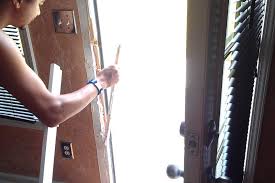

The door is the most defining feature of this room. As all of my consultants and new friends pointed out, interior doors are not meant for anything other than being a screen for privacy. A quality exterior door, while it may look really out of place, takes up almost the same amount of space, and provides ten to fifteen times the amount of protection. To install this, you might need a handyman if you’ve never hung a door, and it may require some slight reconfiguration of the beams near the door to accommodate the slightly larger size, but the safety boost is substantial. Installing a quality lock will buy you precious minutes as you prepare for your final stand. There’s quite a bit more to doors in the next section, but suffice it to say that a standard interior door make of plastic and foam is not going to keep anyone out.

Our panic room is where we keep our safe, our weapons, our file cabinets of important paperwork, and some of our in-home water storage, but nothing else. This needs to be a place that is reserved for emergency, or it may fall into disrepair.
Level 2: Your Home
The remaining areas of your home are your second level of defense – an area where you are well-defended, and have some strong safety features, but where you can still conduct your daily life. Because the interior of your home is where you’re going to spend the majority of your time away from work, it must have substantially better security and defense features than your backyard and immediate outdoor surroundings (Level 3) or your wider outdoor area or neighborhood (Level 4).
As your home will be your primary defense from not only a human attack, but also from storms or other natural disasters, it is essential that you maintain your home’s structural integrity. Three tasks should be taken on with regularity: a formal inspection of your home’s siding and roofing, an energy audit, and thorough maintenance of trees and other obstructions.
The inspection will identify areas where your siding or roofing needs repair or replacement, and, if you get a very good inspector, he can assess the property for potential hazards like areas where flooding could occur. Fixes here are not cheap, but the fact is that very few people have their homes inspected after purchasing them, and as homes change over time, there is value in updating the knowledge of how well your home is doing, and how those repairs you’ve made are holding up.
The energy audit will help to identify cost-savings opportunities for installing power-saving features (new lightbulbs, insulation, windows or doors), but perhaps just as importantly, it can identify areas of leakage around your home – tiny holes that will likely go undiscovered by inspectors which can turn into major issues, such as allowing pests into your home, or where ventilation that is supposed to direct fumes away from your property instead deposit them back into your home in the attic or into your utility room. When we had our energy audit, we were able to identify that the dryer hoses that were supposed to point to the outdoors had slipped out of place, allowing our moist air that was supposed to discharge out to partially discharge in between our walls, causing water damage to the inside of our drywall. We were also able to finally plug the two mouse holes that were underneath our siding, allowing the vermin in.
Finally, the maintenance of trees or other outdoor obstructions future-proofs against a storm that could take out your trees and deposit them on your roof. Doing annual maintenance is significantly easier than replacing the bones of your house.

Smoke detectors, a carbon monoxide detector, and some fire extinguisher complete your basic disaster prep.
In addition to protecting from damage, you must also protect from the human element. The basic defense against intruders is a strong set of doors and windows. Your home is not a bank safe, and this is not a movie scene where the robbers will try to drill through the sides. Intruders will want to enter through the front or rear doors of your property, and will use windows if they want to be stealthy. They’re not going to drill through your home’s siding.
For your front door, make sure it is a solid wood, wood or fiberglass door, and ensure that it has a good lock, deadbolt and latch. Some of the latches your can purchase from stores are metal-coated, but platic on the inside, so getting something heavy is ideal, even if you have to pay more.
In addition to the locking mechanisms, you can purchase metal plating that you install on your doorframe that can help reduce an intruder’s ability to kick in your door. The wooden frame will break under stiff, sudden pressure, but a properly installed metal frame can make that nearly impossible.
It’s possible to purchase horizontal bars that you can install on the interior of your door that you can hide next to your door, and install in an emergency that would prevent the door from opening inwardly, although this may be better suited to use only in your panic room, as it looks a little out of place in a traditional home.
In addition to a solid locking system, I think that a large peephole is a must. There is a newer style of peephole available in which the apeture on the inside of your home is about two and a half inches wide, while the exterior peephole is obscured using mirrors. You can see everything more clearly, at a wide angle, so you can more easily identify who is outside at your door. Video doorbells are an option for today that certainly has a certain “cool factor,” but these are of no use in a grid-down situation, and they can be hacked. The advantage of using them for now is that potential intruders will not know if you’re home or not, as you can answer your door without opening it from any location using a phone app.
A sliding patio door is significantly less safe than a French door system, which would be ideal. It’s possible to get locks for the top and bottom of patio doors, as well as the much less secure handle lock. In addition, you may wish to get a thick wooden dowel rod that sits in the well of the opening door to prevent opening. It won’t stop someone from breaking through, but the noise that causes makes it a bad choice for most burglars.
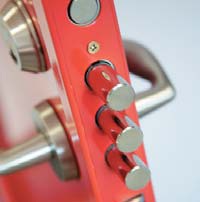
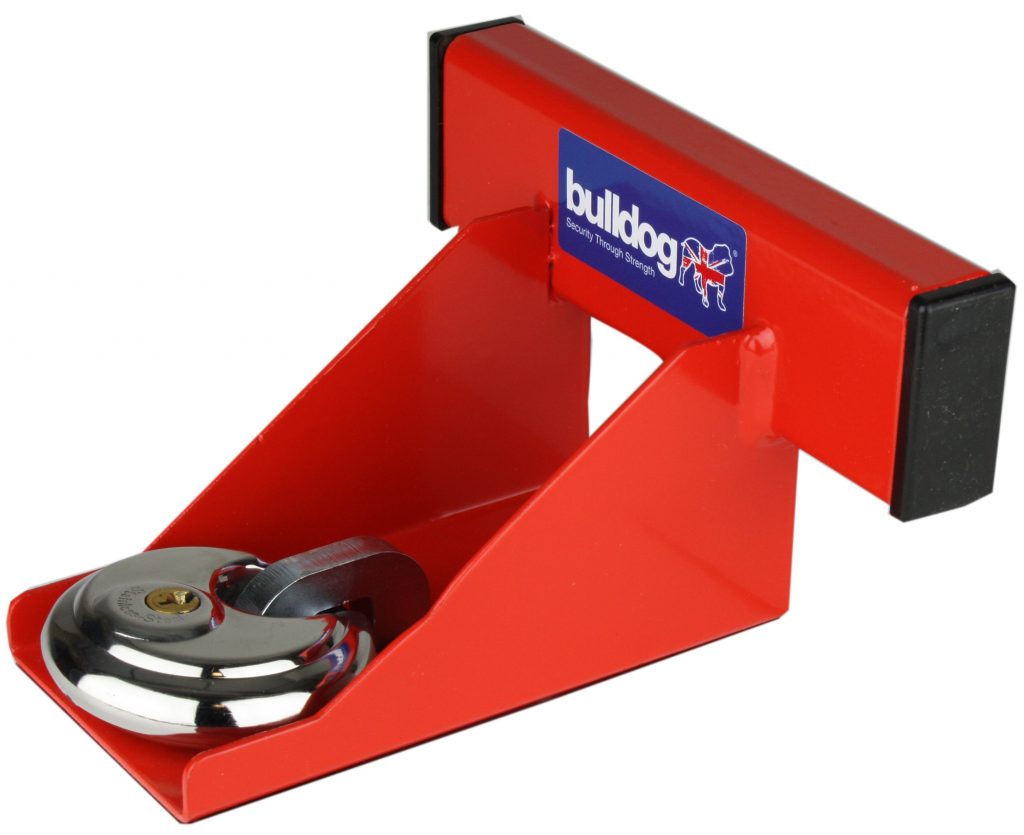

All of the securty on your door is likely overkill, but makes your home a fortress. Once an intruder figures out that they can’t get in, then they’ll go for the next point of entry – your windows. These are significantly less easy to defend than your door, but you can get some basic security features that can go a long way. First, invest in good windows. Newer windows make it difficult to open them from the outside, often come with quality built-in locks, and multiple panes of glass that can make them slightly more difficult to break. This isn’t much defense, but it’s something. It’s also possible to install a shatterproofing film on your windows, and this is recommended for any ground floor windows. Again, it won’t make much of a difference if someone truly wants to break in and cause harm, but it should provide a little more defense, and outside of barricading or boarding up your windows, there’s not a lot more you can do to protect them.
If you live in a hurricane or tornado zone, you probably already have suitable window coverings that you can fit on in case of a storm. If you don’t live in those locations, fashioning these might be something to consider in an SHTF situation. If nothing else, blackout curtains that you can hang from your interior windows to mask the occupants does provide a substantial amount of privacy if you don’t want others to know if you’re home, how many people there are, or what you’re doing in your home. If you have backup power during an outage, for instance, these may allow you to enjoy a normal life without alerting the neighbors to the fact that you have electricity.
Once the basics are taken care of, invest in a security system.
Before purchasing a security system, do a basic assessment of your home. If you wanted to break in, where would you do it? Count the number of windows that are accessible from the ground level, and any in your backyard that can be reached from a ladder. Add one for every door to the outside, including your patio door. This is the number of sensors you’re going to need, along with an alarm.
Installing your own security system is a breeze. Mount your alarm in a central location. It’s just a matter of matching up your pieces and screwing them into the doorframe or windowsill. You connect them to a central monitoring system, whether it’s a smarthome setup or a specific device designed to control the setup. An app on your phone should take care of the rest.

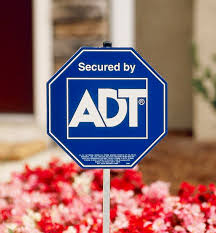


Using a security system does require vigilance. It’s easy to forget that it’s there, and forget to arm it when you leave. Of course, it’s also possible to forget to disarm it when coming home, and be welcomed into your house with a loud blaring siren. If this happens too often, you may decide to avoid using the system all together. That said, the most important part of the security system is not the setup, but rather, the sign that comes with it. Yes, this is a blatant advertisement that you’ve installed something to lookout for when breaking into your home, but if you were a burgular, you’d likely avoid the homes that went through the effort and instead target the homes without a system at all. If you know that you’re not the type to follow through with the arming and disarming of the security system, then the sign at least is quite helpful.
Should you install a camera system? That is something that each reader will have to decide for themselves. First consider that installing cameras throughout your home that are wired to a central monitoring device is a much more substantial project than the security system. Of course, there are wireless cameras, though these can be hacked, and many transmit the images they take to the internet, which is something that I never feel safe with. Some systems have professional monitoring, in which someone is possibly looking in on what you’re doing inside your home. Aside from that, when I wrote a piece on having my home potentially burgularized earlier this year, I had a camera setup that caught a decent view of the perpetrators faces, and the police couldn’t do very much with those images – unless someone is murdered, it is unlikely that your local police will use facial recognition software or a criminal database to identify your attackers. That said, a camera mounted in a high spot along your roof could be a very strong deterrant for would-be burgulars, and you can use cameras very easily to identify any attackers who are breaking into your garage, shed or other outbuildings on your property.
Level 3: Your Immediate Area
The immediate area around your home is a space that is, by nature, difficult to define. For our family, in a suburban home that is fairly well spaced out, we’ve decided that this area is essentially our backyard. Other families may decide that this is too wide or a net, or too small, depending on what areas of your property you and your family decide to use.
Why choose the backyard? This is where the majority of our family’s long-term preps are held – our gardens (for growing new food), our garage (where camping supplies and bug-out bags are stored), our rain barrels (for extremely long-term water storage), our grill and firepit (for electricity-free cooking and heat), and our root cellar (for storing what we grow but cannot immediately eat). Other families may have some livestock areas that they wish to include, or outbuildings like a greenhouse, shed or guest house that they may wish to include in their Level 3 protection area.
Defining the Level 3 area is based on which areas of your property you could limit yourself and your families’ movements to in case of emergency. If we needed to stay home without leaving, we’d use the inside of our home and our backyard – there’s no need for us to go anywhere else in dealing with common emergencies, so long as we can stay at home. We could tend to our gardens, find water, cook food, have access to all of our essential supplies, and our daughter could play in a relatively safe environment.
What makes this environment safe?
We are meticulous about putting away tools. A screwdriver, knife or power tool left out could make a weapon for an intruder. A ladder that is forgotten and left outside could tempt an intruder to try a second or third floor window – one which you may not have protected with your security system, and which you can be less vigilant about locking, especially if you frequently open it to enjoy a breeze. If an intruder decides that they are going to try and break in from a level 3 area of protection, then they will not find what they need to make their job easier on my property.
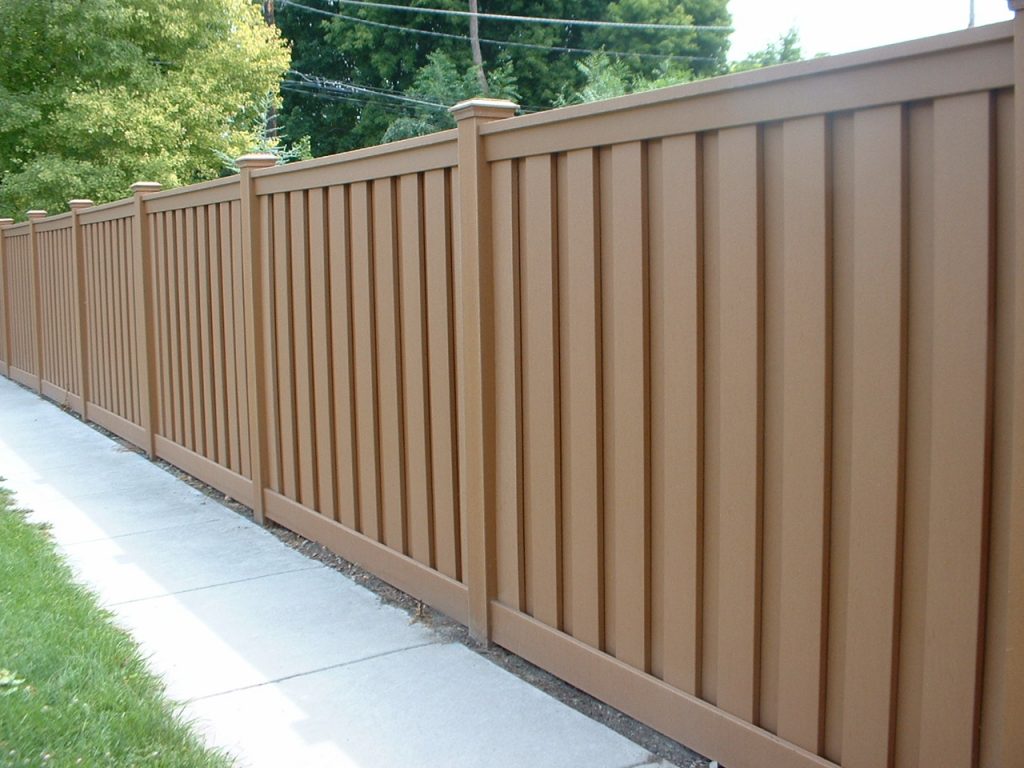
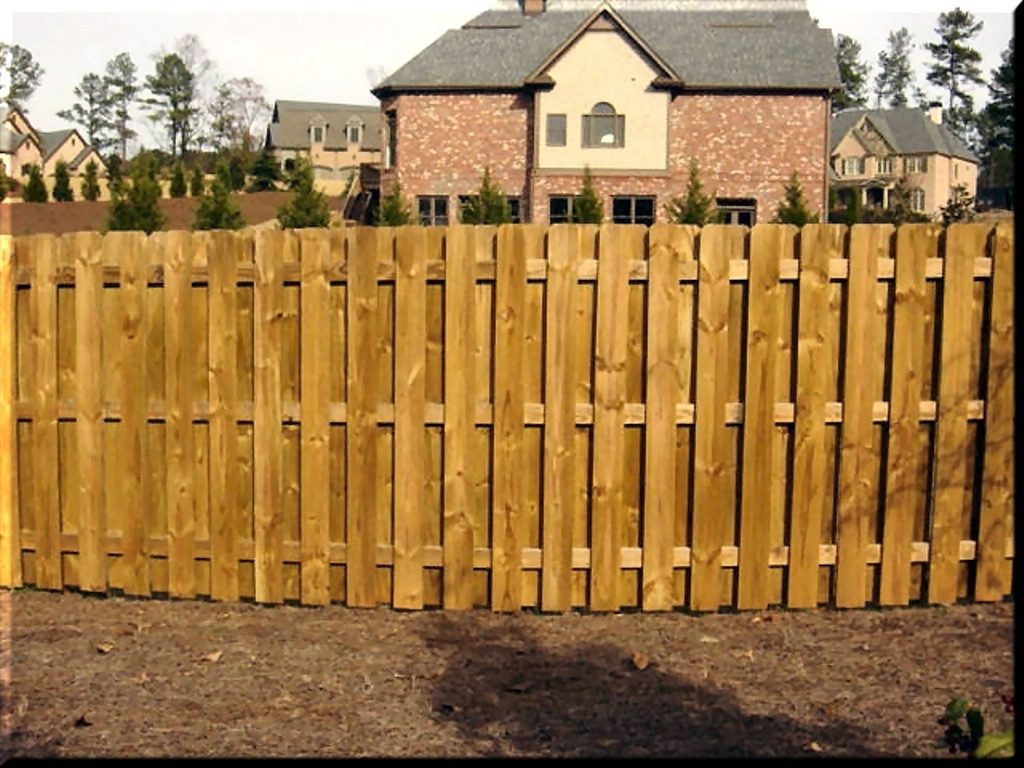

Secondly, we maintain our privacy with a solid composite wood fence. Our fence is made of six-foot-tall full panels, with no gaps showing in between, and has a decorative lattice on top which increases the height by a good 8 inches. Some security experts believe that having a fence is not the greatest idea on certain types of properties, particularly if you are attempting to hide your presence entirely, as it draws attention to an area where you may wish to maintain secrecy. For the majority of properties, however, a fence allows you to go about your business in relative secrecy. One of our neighbors kept a small chicken coop in her backyard against local regulations, and was not caught for many years because she was able to hide it behind a solid fence. You won’t need to worry about anyone spying on your children playing in the backyard, you won’t need to worry about neighbors noticing your orderly and prolific survival gardens, and intruders cannot be certain if you or your dogs are currently occupying the space without revealing their position. Privacy is an important weapon, as it introduces a “fear of the unknown” element to your property.

Chain link fencing provides no privacy, and can be easily climbed. Vinyl fences are basically just opaque sheets of plastic – they provide the privacy you’ll need, but they can be knocked over quite easily and wear out in just a few years. Wood fences are certainly high quality, but require annual maintenance. I think that the clear winner in terms of strength and the amount of maintenance they require over a lifetime is composite wood. It is as strong as wood, and doesn’t need to be painted or sealed to maintain it’s integrity. If someone wants to breach your fence, they’ll be able to, but you certainly wouldn’t want it to be easy.
Our fence has a gate to the side of the house and the driveway. On the panel right next to the fence, we hung two signs: “Beware of Dog” and “No Tresspassing.” We do have a dog (more on animals later), but even if we did not, we’d still have the sign, as it is another technique to deter would-be intruders who may not be comfortable dealing with an animal of unknown size and ferocity. The “No Tresspassing” sign functions similarly to the “Beware of Dog” while being more general, and is just a reinforcement against troublesome teens looking for a shortcut through our yard to get to the park, or too-eager salesmen who don’t respect privacy like they should.
You’ll note that as we step down in security levels, we lose a lot of options – intruders can climb any fence, knock down any panels, and it’s not as difficult to break into gate locks. Storms can easily penetrate the area, but many of the basics from level two remain important in level three, and it is recommended that you put a padlock on your gate if you have one, and keep all doors that lead into your home or your outbuildings locked as well, despite the added safety that the fence can provide.
Level 4: Your Greater Area
For those with an urban or suburban property, your “greater area” probably just means your front yard. For those with a sprawling rural property, this includes all of your land, and often some of the surrounding countryside. If you live in a gated community, condominum or apartment, you may want to include your entire neighborhood.
Let’s talk about the rural areas first, as these are more difficult to deal with. If you raise livestock, or plant corn or wheat fields, then you need to use the land, and you need to put up some kind of fence in parts to help keep your livestock in. With crops, a fence is not strictly necessary, but may serve as a reminder that the crops are not free for the taking – they belong to someone who is willing to claim them. In these situations, a 6 foot tall composite fence is out of the question, and a simple ranch fence is going to suffice. If nothing else, a fence may serve as a reminder to potential passersby and squatters that the property has been claimed, and that someone may be living there.
Again, fencing your property in this way does cause some attention to be drawn to your home base, and it is certainly worth considering if you’d like to drop the concept in lieu of maintaining a secret compound. Signage, like a “Private Property” or “No Trespassing” signs, are also something to consider, and are by no means necessary, but are something that may be valuable if you live in an area with people coming by.
An alternative to fencing would be to set up a tripwire system, which would be particularly effective in a forested environment. The tripwires are simply taut wires low to the ground, between trees or rocks, connected to some kind of device, be it a trap or a loud, noisemaker. This will alert you to their presence, and probably scare them half to death, and it allows you to defend your property if they do decide to move forwards. Traps, if they catch people, can open you up to some significant liability, even if they are trespassing, so you may wish to investigate some local laws if you want to install anything truly dangerous.
For practical purposes, it is essential that people be allowed to approach your property. Whether it’s a friendly neighbor looking to borrow a cup of sugar, or a mailman delivering a package to your doorstep, or even an insurance adjuster, electrical company worker, or county tax analyst, it wouldn’t be wise to snare them or drop them into a pit during an everyday exchange prior to TEOTWAWKI. Because of this, you need to take a good look at the Level 4 area you wish to protect, and identify where it starts, where it ends, and how you want people to approach your compound.
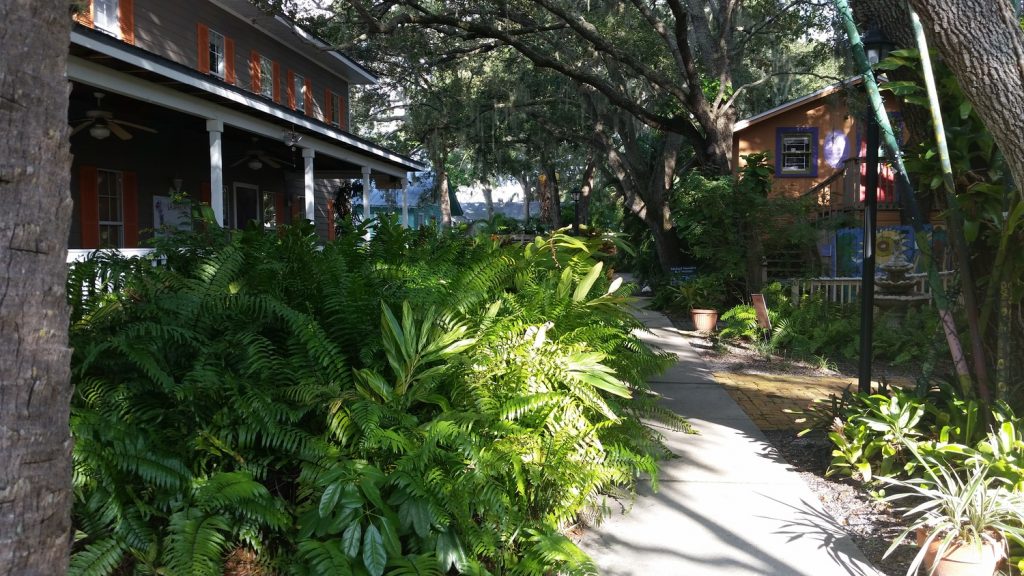
Secrecy, such as an unmarked, well-hidden home, is certainly one form of dealing with people, but requires a very specific type of property – likely a homestead or a permanent bug-out shelter where you likely don’t live full-time, and probably something with a great deal of land surrounding it, and a good number of trees or other obstructions. For everyone else you need to define your area with various physical features.
Your fence is a good place to start, particularly if it is a ranch fence system, a chain link, or something that allows you great visibility. Almost no normal people will jump your fence to approach your property when they could simply walk around to the path you’ve built in your landscaping. If they decide to do this, you certainly can prepare for defense. Other good path blockers include a low row of bushes or flowers outlining the edge of your property, or a row of trees, although this latter option does limit your visibility.
The goal for an outline border should be to naturally funnel visitors, friendly or otherwise, to a specific, well-lit path towards your well-protected front door. Whatever you choose should be enough to deter people from walking across your lawn or, really, in any other area they want to, and to force them to approach from a direction of your choosing. The border you choose should be tall enough to be noticed, difficult to step over, well-kept enough that visitors don’t think it to be accidental, and low enough that it provides little cover – you want to be able to see you visitors coming, and not be surprised by someone crouching behind the rosebush.
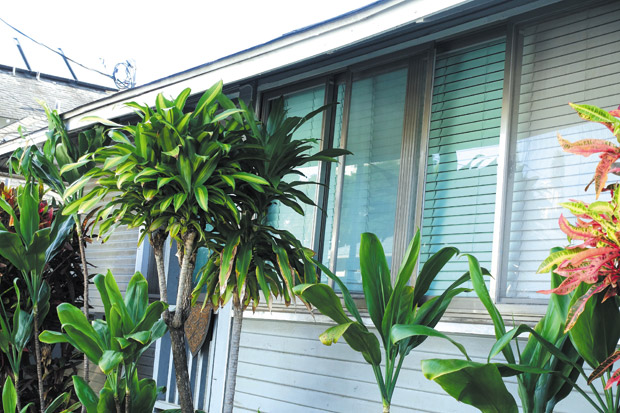
Outside of lower-level windows, it is advisable to plant a bush directly in front of the window that would prevent interlopers from looking in and/or having a steady stance from which they could remove or enter the windows. Spiked bushes are a first choice, while dense, wooded bushes like a yew or arbrovitae would make a good second choice. These bushes should be trimmed low enough that you can get a full view of the front of your property from the inside window. Not only does this provide good securty, but it’s also a fairly common and well-liked look for most suburban homes, and it won’t hurt your property value.
Pathways are important feature as well. A smooth paved path from the sidewalk to the porch or front door landing is certainly an option, but a rougher, more natural path made with stone gravel forces people to walk more slowly to avoid the small tripping hazards that is “naturally” implied. A winding path, one that takes visitors across the path of your front window, will allow you to see visitors before they ring the doorbell, and will delay a visitors’ arrival at your doorstep by a few seconds. We remodeled our property to include a path with one long wind that runs from our driveway up to the front door, and we used one side of the path as a small flower and herb garden, and we noticed that neighbors and postal workers both lingered over the small garden and walked carefully to respect what we had planted, and it allowed us the added peace of mind of knowing that we have extra time to respond to potential threats knocking at our door.
Paths around the remainder of your property are less important than the one that approaches your home, and may even be something you wish to obscure as much as possible. Any time you step down in level, but particularly from Level 3 to Level 4, you are subjecting yourself to a greater lack of security. If your attackers know where you’re going, such as from a side gate from your backyard to a stream or river on your property, they can see the path just as well as you can, allowing them to plan a strike.
In order to see someone approaching your home at night, it is advisable to ensure that the areas you want to funnel guests to and from in your front yard are well-lit. Security lighting, which goes on during the night time whenver something passes in front of the sensor, is a powerful tool, as it provides visibility and has a certain scare effect for burgulars that may dissuade them. As these lights do turn off, it is in your interest to also have a decent amount of switch-operated lights if you do happen to see something you want to investigate further. In our home, outdoor lights are put on timed switches inside, so that they automatically come on at night, and we don’t need to think about making sure that we’ve set them on.
Other Security Considerations

When our home was almost broken into early this year, our locks were not the thing that kept the intruders outside, it was Golem, our 90 pound American Bulldog. He is a sweetheart, and had the intruders made it inside, he was as likely to nuzzle them as strike, but his large frame and powerful jaw make him an imposing force, as does his strong hearty bark. The would-be burgulars heard one warning bark from him, saw him sitting in the kitchen, and ran as fast as they could. Golem is not an attack dog, and he’s certainly not trained to fight. He doesn’t need to be. He’s big, he’s a little scary, and he is one of our home’s most important security features. Think of a dog as an “always on” monitor that can roam the house or the yard, and who is always fiercely loyal to those who treat him well. I believe that a dog’s effectiveness as a security measure is directly proportional to his size and his “scare factor”, so I do not consider smaller dogs nearly as good of an option.

Smart home devices are all the rage, and are more frequently being used for home security, including digital locks and door handles, security systems, and smart lighting systems that you can use outside. Smart homes, like wifi cameras, and any other devices which connect to the internet, can be hacked, and using the more popular ecosystems (Samsung Smartthings, Echo, Google Home) are probably more likely to be hacked. The only hack for a keyed deadbolt is to have the key, which makes it much more secure.
Have you changed the locks in your home since you bought it? When you purchase a new home, the former owners are supposed to turn over all old keys, but they may not have. If you purchased your home while the former owners were under duress, in a short sale or foreclosure situation for example, they may not particularly like you living in their home. In addition, if your former home’s owner gave an emergency key to a trusted neighbor, or hid an exterior key to the home hidden somewhere, like underneath a rock in the garden, then it’s possible that more keys exist that you don’t know about.
Traps or weaponry can also be used in an SHTF situation, deployed around your home and on your formerly welcoming pathway. Two nails bent and twisted around each other creates a weapon called a caltrop, which can be scattered around your property to catch in the boots and shoes of intruders, or to puncture tires. If you want to set up a snare or fall trap, then this is possible as well. Like other advice regarding traps, some jurisdictions will punish the property owner for harm done to anyone on that property, whether they’re supposed to be there or not. See this article for some legal clarification on intruders and your ability to set traps and defend your home.
Security, as defined above, is not simply a measure of how strong your defenses are, but how much smarter you are than an attacker. Concepts like privacy curtains, masking the number of people who are home at any given time, are just as important, if not more important, than having the most secure locks, the most indestructible fencing materials, or the best panic room. Certainly, having good locks on your doors is a boon, but if intruders have no intention of breaking into your home because of good signage, a threatening dog, or a security system sign on your front lawn, then that is just as good.
Follow The Prepper Journal on Facebook!
The post Home Security – One Preppers Experience appeared first on The Prepper Journal.
from The Prepper Journal
Don't forget to visit the store and pick up some gear at The COR Outfitters. How prepared are you for emergencies?
#SurvivalFirestarter #SurvivalBugOutBackpack #PrepperSurvivalPack #SHTFGear #SHTFBag

No comments:
Post a Comment